I am pleased to present a new post from Catherine, a member of the Solo Travel Society on Facebook and a contributor to Solo Traveler. Cat is from Canada and submitted the following report about solo travel to Salamanca, Spain. Do you have a solo travel destination that you would like to recommend? Submit your description here, along with a few photos, and share it with fellow travelers!
Solo Travel Rating: 1 (1 is easiest, 3 is most difficult. Please see chart below)
Languages Spoken: Spanish, English
Costs at Destination: Reasonable (local transportation, dining, tours, events, and attractions)
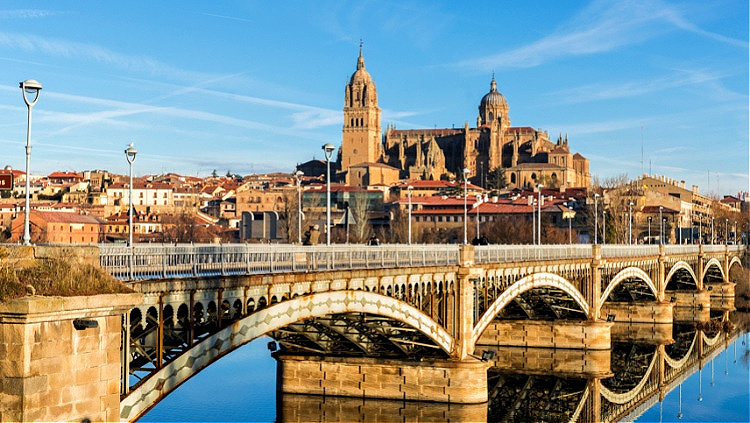
Solo Travel to Salamanca: Watch Your Step!
You know those places where you look around and don’t even know where to begin because you’re in awe of absolutely everything?
Where you are constantly tripping over the cobbled streets because you’re looking up and around and not where you’re going?
For me, that is Salamanca, Spain.
Salamanca, a small city in the Castile y León region of Spain, is most famous for its university, which, having been founded in 1218, is the oldest in Spain and one of the oldest in the world.
The city dates back to Celtic times and went through the similar ebbs and flows as the rest of Spain throughout the centuries. Having been conquered by the Romans and Muslims, eventually changing hands to the Catholic kings, Salamanca reached the height of its splendor in the 16th Century.
These days, students give this UNESCO Heritage Site a youthful vibrancy as trendy bars and restaurants intermingle among centuries of religious and intellectual history. It’s the best of both worlds.
From students coming from all over Spain to party, to those of us wanting to explore the historical sites and end the day with a glass of wine in floodlit Plaza Mayor, Salamanca has something to offer everyone for a weekend away. And spending a night here is a must.
While the modern city is somewhat underwhelming, the old town is where you will find the most spectacular architecture and all of the major tourist attractions.
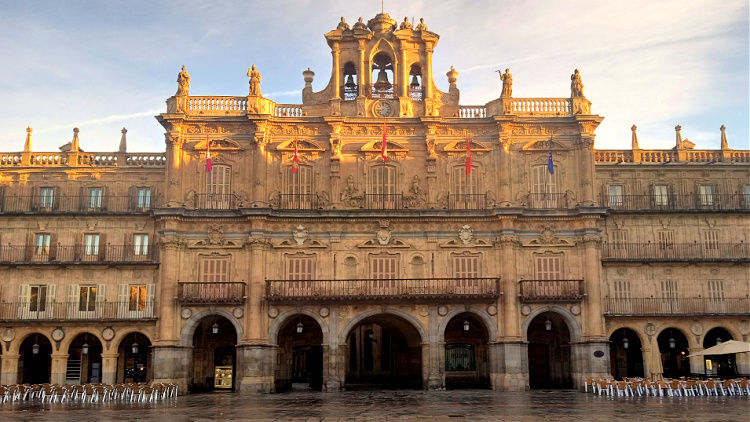
Plaza Mayor
All roads lead to the magnificent Plaza Mayor. I have seen a lot of Plaza Mayors around Spain, and I have to say, this is one of the best! Day and night, the plaza is packed with tourists and locals alike, sitting at the many terraces enjoying coffee and tapas or wandering around in awe of the intricate details of the surrounding buildings.
Construction of Plaza Mayor began in 1729 and was built in the Spanish Baroque style. Like the rest of the old city, it was constructed in sandstone, which gives it that breathtaking glow that seems to move with the light.
It was used for bullfighting up until the mid-19th Century, but is now full of shops, restaurants, private residences and City Hall. Today, it’s the city’s living room.
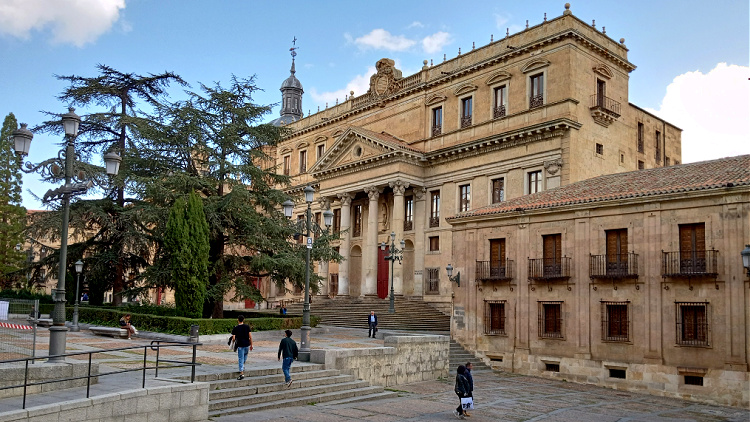
Salamanca University
The oldest continuously operating university is here in Salamanca. Attracting people from all over Spain and the rest of the world, there are some 30,000 students in undergraduate and graduate programs at this top-ranked university.
The university is an important place for the study of the humanities, languages, law, and economics and is the home of numerous research centers, namely for cancer and neuroscience.
There is also a fascinating history of sorcery and black magic here at the school!
Salamanca Cathedral(s)
Salamanca Cathedral is actually two — the old and the new, joined together.
The Old Cathedral was built in the Romanesque style and dates from the 12th to 13th Centuries. The New Cathedral was constructed in the 16th Century with Gothic and Baroque features.
The interweaving of the different styles can be seen in the Cathedral’s remarkable dome, choir, sculptures, and pillars, which take visitors on a fascinating and rich artistic journey through the centuries.
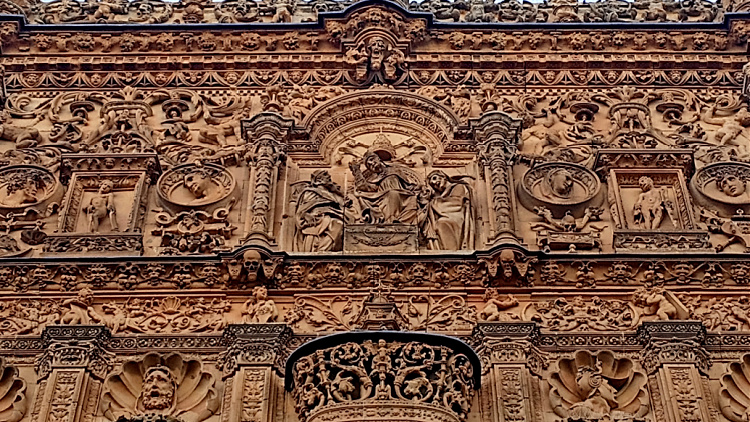
Solo Travel to Salamanca Requires Finding the Famous Frog
If you’re not familiar with the fabled frog of the University of Salamanca, you’ll soon become acquainted with it. In every tourist shop, mugs, pens, magnets, and t-shirts are adorned with this little green amphibian.
Why is this?
The frog is said to represent the story of Prince Juan of Seville who, in 1497, died when he was just a teenager, prior to the completion of this façade. The academic community believes that the frog is an homage to Dr. Parra, who tried to save the prince’s life, hence the nickname La Parrita, or Little Parra.
Superstition has it that when first-time students arrive at the University of Salamanca, it is a rite of passage to try to locate the teeny frog carved into the detail-filled 16th Century façade of the main building of the University. If you can find it, academic success is guaranteed for the year ahead.
Despite my university days being long behind me, I was up for the challenge. I admit that I did cheat a little because I did not have all day to search for this wee creature. I had tapas to eat!
Spoiler alert ahead…
Face the doors and look up and to the right. He sits atop a skull. Now, go enjoy your tapas!
Cielo de Salamanca
It is forbidden to take photographs of the painting of the Cielo de Salamanca (not that this stops anyone), but trust me, this is something not to be missed.
Created in the 1480’s and now located in the Escuelas Menores of the University of Salamanca, this gorgeous painted vault highlights the study and knowledge of astronomy in the 15th Century. Astrology lovers will enjoy craning their necks to find their zodiac sign and favorite constellation.
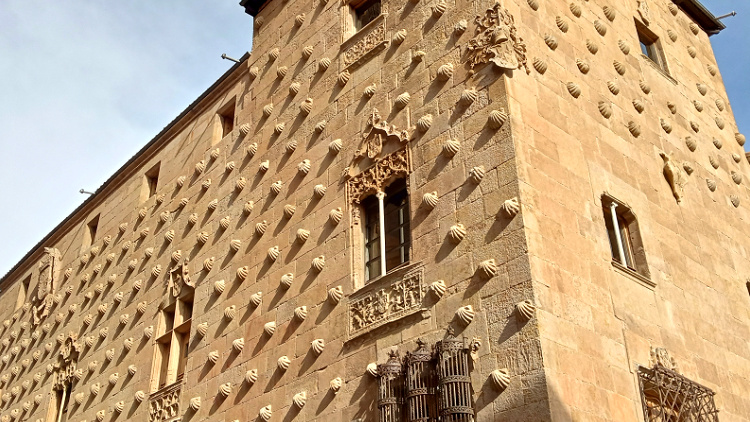
Casa de las Conchas
The Casa de las Conchas is definitely the coolest public library I have ever been to. It’s free to take a step inside and walk around the beautiful patio which doubles as an exhibition hall.
Having walked the Camino de Santiago, I am particularly fond of the façade, which is adorned with over 300 scallop shells, the symbol of the Camino. “The Camino House”, as I like to call it, was built from 1493 through 1517 by Rodrigo Arias de Maldonado. He was a professor at the University of Salamanca and a knight of the Order of Santiago de Compostela. This building is also a meaningful stop for the pilgrims who pass through Salamanca while walking the Via de la Plata route of the Camino de Santiago.
Some other interesting details which adorn this Gothic building are the coat of arms of the Catholic monarchs, four differently-shaped windows, the coat of arms of the Maldonado family, dolphins — the Renaissance symbol of love, and different vegetables. But the shells are certainly the most prominent and eye-catching.
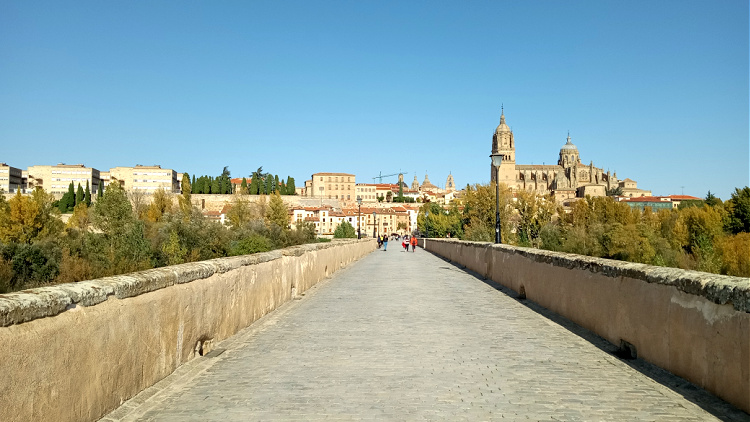
Roman Bridge
Take a walk over the ancient Roman bridge and observe the old center from the other side of the Tormes River.
Dating back to the 1st Century, during Roman rule, this bridge was constructed as a crossing on the Via de la Plata, connecting Mérida and Astorga.
Now only used for pedestrians, this bridge has undergone several repairs and reconstructions due to the flooding and traffic it has endured over the centuries.
Today, it makes for a delightful stroll offering sweeping views of the river and old city center.
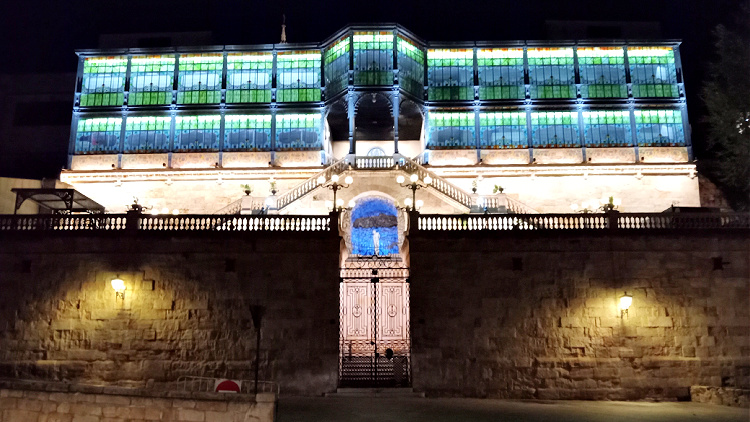
Casa Lis
This magnificent mansion is a celebration of the Art Deco and Art Nouveau styles. It was built in the early 1900’s for Miguel de Lis, a wealthy business owner who ran a lucrative tanning factory.
It has changed hands many times throughout the century, eventually falling into disrepair in the 1970’s. In 1981, the City of Salamanca reclaimed and repaired this elegant building. It now houses an extensive collection of decorative arts from the 19th Century through World War II.
When you travel solo to Salamanca, you can see fascinating artifacts including sculptures, fans, glasswork, and a superb collection of dolls. For anyone who loves knickknacks, this is the place for you!
Be sure to take a break to marvel at the exquisite stained glass and view of the river from the quaint cafe.
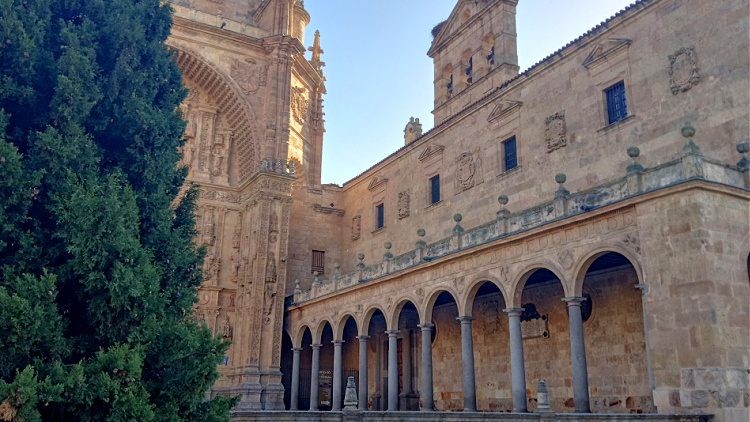
Convent of San Esteban
The Convent of San Esteban is probably my favorite place in Salamanca. On my evening stroll, the winding streets led me here and I was so taken with the beautifully-floodlit stonework. The detail is truly astonishing.
Completed in 1610 for the Dominican order, this grand site consists of a church, sacristy, cloister and chapter houses, in addition to the University’s Faculty of Theology.
While the most intricate details and ornate work can be found on the church’s façade, a walk through the interior will offer a rewarding glimpse into the history and life of the monastic order who occupied this space.
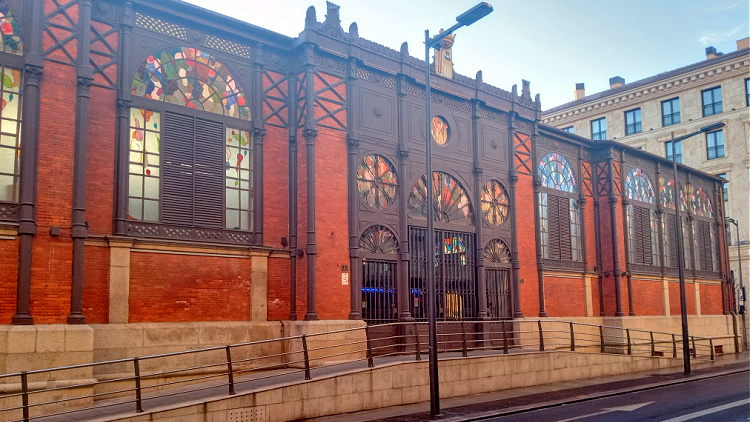
Travel Solo to Salamanca and Enjoy the Central Market
Markets are a highlight of any Spanish city. Solo travel to Salamanca can include mixing with the locals here and feeling the pulsating chaos of everyone clamoring to buy the freshest catch of the day or straight-out-of-the-oven loaves of bread.
At 103 years old, Central Market is the oldest in Salamanca. Located just a few steps from Plaza Mayor and the main shopping area of the city, this is a delightful place to take in the interesting architecture and stained glass, and pick up jamón and queso for a picnic lunch from some of its 53 stalls.
While you cannot go wrong in Spain for amazing solo destinations, Salamanca is one of the best.
I stayed at the cheerful Hotel Aragón for a budget-friendly 35 euros a night for a single private room. While a little dated, the location is fantastic and the staff are very kind and helpful.
There is no shortage of choices for food, and Salamanca has everything from Michelin starred restaurants to Burger King. I had exceptional tapas at Tapas 2.0 and enjoyed wine and a snack at Nero Salamanca, in Plaza Mayor.
Don’t forget about Spain’s famous menús del día where, for a very affordable set price, usually around 12 to 15 euros (more expensive on weekends), you receive a starter, main course, and dessert along with a drink. These are everywhere, so grab a seat outside and watch the world go by as you enjoy your grand meal!
Salamanca is a quick two and a half hours by bus from Madrid and makes for a great day trip and an even better overnight. Spend time surveying all of the tiny details in the elaborate architecture, enjoy the relaxed vibe over wine and tasty tapas, and dip through the many open doors — there are surprises around every corner in this delightful little city.
Solo Travel Rating for Salamanca
- Safety – 1 (1 very safe, 2 safe in most areas, 3 be cautious at all times.)
- Language – 2 (1 English is first language, 2 English speakers easy to find, 3 English speakers rare)
- Navigation – 1 (1 easy to navigate by transit or car, 2 poor transit, car necessary, 3 not easy to get around)
- Culture – 1 (1 Similar to North America or Western Europe, 2 Different from above but relaxed and easy, 3 Challenging)
- Average Rating – 1 (1 is easiest, 3 is most difficult)
